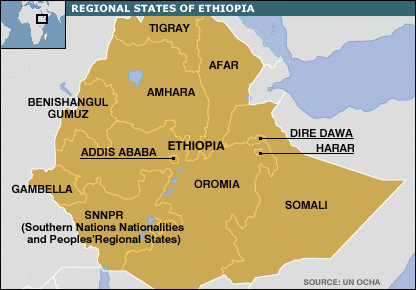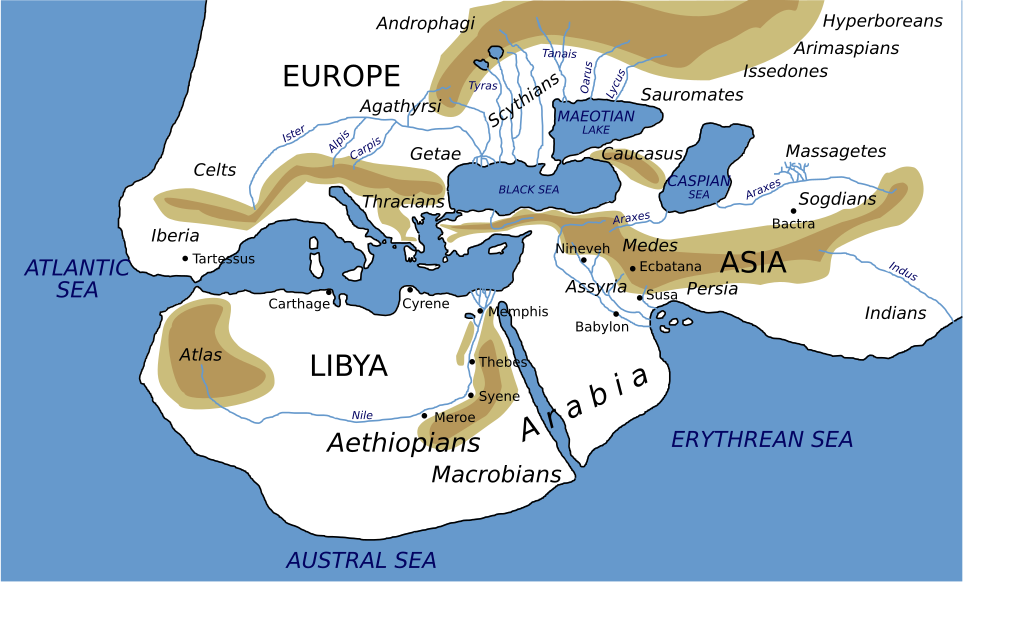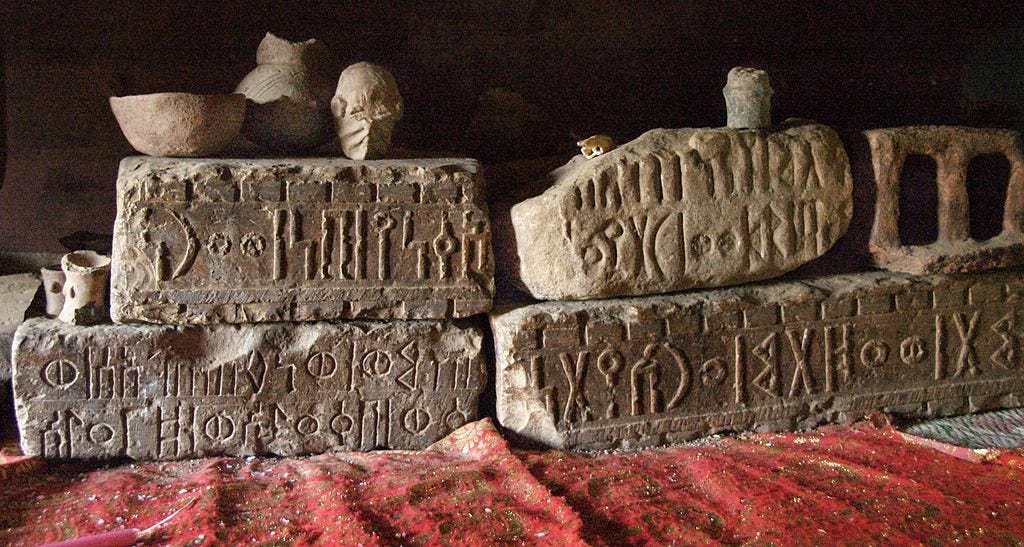Ethiopia - Part 1, Ancient Times & Avoiding Colonialism
"What would an African state be like if it were never colonized?"
Ethiopia, Africa's second most populous nation with 115 million inhabitants, is characterized by a diverse tapestry of ethnicities. The country is huge, it is the size of France, Germany, and Italy combined or California + Texas. Predominantly, there are the Oromo in the South, Amharic in the North West, Tigray in the far North West, the Afar in the North East, Somalis in the East, alongside various other ethnic groups.
Resisting colonization, Ethiopia retains its distinct languages, calendar, and embraces Ethiopian Christianity and Islam as prevailing religions. Notably, instead of an "independence day," the nation commemorates a "victory day" marking the Battle of Adwa, a pivotal event where Italy's colonial ambitions were thwarted. Ethiopia is also the birthplace of coffee.
The name "Ethiopia" comes from the Greek phrase "Aethiopia," first found in Homer’s Iliad. The word means "land of Burnt People" historically referring to any Black African land south of the Sahara.
While Ethiopia's history is marked by resilience, it was not a pacifist realm. Like many states, it evolved from an empire, consolidating numerous ethnicities through conquest. This expansionist approach was necessitated by the need to defend against Egyptian, Sudanese, and European advances. Landlocked after losing Eritrea, Ethiopia's strategic imperatives drove territorial growth and the subjugation of new territories.
History of Ethiopia
Land of Punt
The oldest recorded history of a civilization in Ethiopia is most likely the land of Punt, which encompasses North Ethiopia, Eritrea, Djibouti, and barely parts of Somalia. Egyptians wrote in hieroglyphics that they bought gold, incense, baboons, and other luxury items from this land in Africa. In return, the Puntlandians bought grain, hardwoods, and Egyptian linen.
Eventually Puntland declined, and D’mt emerged.
Daamat (980 BC-400 BC)
Around the 10th century BC, the Kingdom of D’mt emerged. It was situated in the Tigray region and bordering Eritrea and Northern Ethiopia. Yeha, located in present-day Tigray, served as its capital.
Ethiopians in D’mt (Damat) were known to trade with Arabs and Egyptians. In fact, part of the Red Sea trade involved selling African slaves since antiquity. Egypt has hieroglyphics on receiving slaves from Ethiopia.
Akum, African Rome (150 BC -960 AD)

Following the fall of Damot, the Kingdom of Aksum emerged in Northern Ethiopia, governed by the Habesha people. The capital shifted from Yeha to Aksum, a distance of 32 miles (52 km), both situated in the modern-day Tigray region of Ethiopia.
The Persian prophet Mani, who lived in 3rd century AD, wrote:
“There are four great kingdoms on earth: the first is the Kingdom of Babylon and Persia; the second is the Kingdom of Rome; the third is the Kingdom of the Aksumites: the fourth is the kingdom of the Chinese.”
Spanning from the 4th century BC to 960 AD, Aksum's dominion extended over much of modern day Ethiopia, Eritrea, and Yemen. It also briefly subjugated Nubia (modern-day lower Egypt and upper Sudan). Aksum fostered trade with India, Arabia, Greece, Egypt, and Rome via the Nile and Red Sea routes. This era led the Greeks to label Aksum as "Ethiopia," signifying "land of Burnt People" due to cultural exchanges. The kingdom established its own currency and undertook public works projects. In the 4th century, under the reign of King Ezana, Aksum embraced Christianity as a state religion, akin to Constantine's conversion in Rome.
Axum was the second country, after Armenia, to become Christian. Aksum was officially Christian before ROME was.
Similar to how Rome lost to the Huns and Vandals, Aksum became a relatively irrelevant city-state when Persians of Iran defeated Aksum and reconquered Yemen in the 6th century AD. Then the Arabs of the new religion Islam defeated the Persians and controlled the red sea. Aksum declined hard from losing access to trade in the read sea: economic decline, monetary system collapse, urban population fell. By the 10th century Aksum was dead.
The Zagwe Dynasty and the Shewa (900 AD-1270 AD)
The Aksum kingdom died by stronger kingdoms and became the Christian Zagwe dynasty, the Jewish Simien Kingdom, the Muslim Shewa Sultanate, and other smaller mini-states.
Eventually, these kingdoms were replaced by the Solomonic Dynasty. Ethiopia became an empire.
The Solomonic Empire - Ethiopia (1270 AD-1974 AD)
The Solomonic Empire, led by the Amharic tribe and initiated by Yekuno Amlak, expanded its influence through military conquests and the propagation of Christianity. The dynasty's legitimacy was cemented by the creation of book called "The King's Glory" (Kebra Nagest), asserting lineage from King Solomon and Queen Sheba. They made laws written in Fetha Nagast “The King’s Law” where they had laws saying that slavery was legal for prisoners of war, non-believers, and children of slaves. In Fetha Nagast, slaves had dual status - on one hand they were treated as property (chattel slavery), and could not own property, serve as a witness, act as a judge, hold public office, serve as a guardian, or represent their lawyer. They were also a commodity, where a slave could be sold or rented.
However, if a slave was a Christian, they were treated like a human being. They had the right to worship and a woman’s slave was entitled to keep their kid. There were also manumission clauses that allowed a slave to be free.
Besides permanent slavery, where a slave could be whipped, they also had indentured servitude and had slavery for people who committed crimes.
Under emperor Amda Seyon I, he diversified the empire by subjugating neighboring Muslim tribes, resulting in a multi-ethnic rule with the Amhara in charge.
The Solomonic Dynasty implemented a feudal land system known as "gult," wherein the Emperor granted land in exchange for labor or military service. Gult holders, in turn, levied tribute taxes on tenant farmers, sometimes amounting to 50% to 75% of agricultural output. This system was very similar to the European Feudal system.
War with Somalis & Ottoman Turks
Despite its power, the Solomonic Ethiopian Empire faced challenges from independent city-states on its periphery. Prolonged conflicts, such as with the Adal Sultanate in modern-day Djibouti and Somalia, posed significant threats to Ethiopia in the 16th century.
European interest in Ethiopia, fueled by Crusader legends of a savior figure named "Presta John," led to exploration. Portugal offered support to Ethiopia against surrounding Islamic states, arming Ethiopians against the Adal Somalis, while Ottoman Turks gave muskets to the Adal Sultanate. During this time, Europeans called Ethiopia “Abyssinia”. Portugal and Ottoman Turkey used the Ethiopians and Adal Somalis to gain control of trade in the red sea. Ultimately, Ethiopia won with Portuguese muskets, which meant Portugal was free to navigate the Red Seas and expand its empire.
From the 1600s to 1750s, was an Ethiopian “Golden age” of stability, art, architecture, churches, and murals in the city of Gonder. Ethiopia was taken seriously by Europeans and created embassies in France.
From 1755 to 1855, Ethiopia experienced a tumultuous period known as Zemene Mesafint or the "Age of Princes," characterized by decentralization, raids, and internal strife. Vassal states broke away, leading to a fragmented political landscape. The Yejju dynasty, led by the Oromos, an ethnic group that migrated into Ethiopia in the 16th century, held sway until Emperor Tewodros, of Amhara descent, reasserted centralized authority.
Bucking the Trends
Emperor Tewodros II (1855-1868)
Emperor Tewodros II, originally Ras Kassa, initiated a centralization drive to modernize Ethiopia. This included establishing a bureaucracy, judiciary, and military. At the time, Ethiopia consisted primarily of the Shewa region, with semi-independent vassal city-states and provinces. Through acquiring firearm knowledge from European mercenaries & missionaries he captured, Tewodros subdued these semi-autonomous regions, instituting tax systems and appointing governors in lieu of independent rulers.
Tewodros was the first Emperor to ban the slave trade, which was monumental since selling Black Africans part of Ethiopian culture. But he did not ban slavery in Ethiopia.
In 1865, Tewodros II apprehended a British consul, suspecting British involvement in raids by Sudan and French Somalia. This led to a British expeditionary force with, more advanced rifles, attacking and plundering the capital, Magdala, seizing its treasures. This event underscored Ethiopia's technological disparity with European powers, particularly Britain. Ethiopia had muskets & spears, Britain had rifles & artillery. In the face of this, Tewodros chose to end his own life to avoid capture.
With Britain opting against full conquest due to the costs involved, Ethiopia was left in a state of fragmented governance. Giyorgis, the subsequent leader, attempted to consolidate legitimacy before ultimately succumbing to Yohannes' authority.
Emperor Yohannes (1871-1889)
Emperor Yohannes, hailing from Northern Tigray, sought to unify Ethiopia. However, Egypt, under Ottoman Turkish control, aimed to extend its dominion over East Africa. Egypt's conquests included the Harar region (now part of modern Ethiopia), present-day Sudan, South Sudan, Eritrea, and portions of eastern Chad, northern Uganda, Djibouti, and Somalia. Additionally, Egypt, with financial backing from Paris, spearheaded the construction of the Suez Canal.

Emperor Yohannes would tax his farmers and provide gold to Westerners to hire Western military officers and weapons, successfully defending Ethiopia against from Turkish Egypt & the brief rebel regime, Mahdist Sudan. After Ethiopia defeated Egypt in the Battle of Gundet and Battle of Gura, both in modern day Eritrea, Egypt’s imperialist campaign of North East Africa ended and Egypt owed massive debt to bankers in London & Paris. As a result, Egypt sold the Suez Canal to Britain in 1875, leaving Egypt vulnerable to British conquest. Egypt's African territories were dismantled and fell under European control.
Surviving conflicts with Turkish Egypt, Ethiopia gained the capacity to expand its territory in Northeast Africa, including bringing the Amharic Showa region under its dominion. However, Yohannes met a tragic end, falling to an assassin's bullet.
Just as Ethiopia just defeated Egypt’s conquest of Africa. Britain decided to take Egypt from Ottoman Turkish rule in 1882. In 1885, German Chancellor Bismarck orchestrated the Berlin Conference, famously known as the "Scramble for Africa," where European powers delineated their respective territories. Italy claimed Somalia and Eritrea, expressing interest in annexing Ethiopia as well.
Emperor Menelik II (1889-1913)
“Ethiopia has been for 14 centuries a Christian island in a sea of pagans. If Powers at a distance come forward to partition Africa between them, I do not intend to remain an indifferent spectator” — What Emperor Menelik II said to the European Powers

Emperor Menelik II, along with his wife Taytu, adeptly leveraged European alliances to safeguard Ethiopian sovereignty and expand its influence. Ethiopia befriended fellow Orthodox Christian country, Russia, and France, who didn’t want Italy to take more of East Africa. As a result of smart foreign policy, the Russians and French sold weapons Ethiopia and in return, Ethiopia gave the Russians and French gold, ivory, and coffee.
He also wanted to end slavery, which was a “national custom” in the country. However, he still owned 1000s of slaves.
*Note even though Ethiopia was never colonized, in terms of trade, Ethiopia was no different than a colony. Ethiopia sold raw materials and agriculture products for manufactured goods, guns. Ethiopia despite being free was not able to foster an entrepreneurial class that was innovating on 19th century innovations like steam engines, cars, locomotives, or washing machines.
In 1895, Italy wanted a colony and tried to take Ethiopia. Italy made a treaty with Ethiopia where Ethiopia recognized Italian rule over Eritrea, Ethiopia would be protected by Italy, and Ethiopia received guns and money. But there were translation issues from Italian to Amharic. In Amharic, Emperor Menelik thought he was signing a document of Italian protection, like a defense pact. But in Italian, the document said that Ethiopia would be an Italian protectorate (a colony). Emperor Menelik, fearing European conquest, rapidly expanded the Ethiopian Kingdom by conquering the Oromo, the Kaffa Kingdom, Sidamo, Wolayta, the Ottoman Emirate of Harar, the Somalis in Ogaden, and other people. Ethiopia imperialized smaller Pagan/Muslim Kingdoms and converted them to Christianity before the Europeans did. This event was called Agar Maqnat (“cultivation” of land”) which greatly expanded Ethiopia. Italy successfully took Eritrea, while Britain, Italy, and France similarly secured Somali territories.
With more bodies to throw at Italy with his new territory, Emperor Menelik smacked Italy out of the country in the battle of Adwa, where 80K Ethiopians beat 20K Italians. Because Ethiopia defeated Italy, Ethiopia became the sole African country to escape colonization.
Ethiopia then modernized by expanding production of gold, coffee, and ivory exports to Westerners in order to make a new capital in Addis Ababa, open schools, make hospitals, build communication networks, and rail from Ethiopia to French Somaliland (Djibouti). The Ethiopian elites became very wealthy selling natural resources to Europeans.
Eyasu V
Unlike other Emperors, Eyasu liked slavery. In 1912, he did a slave expedition deep into Africa.
Stick Around for more about Ethiopia in Part 2!















